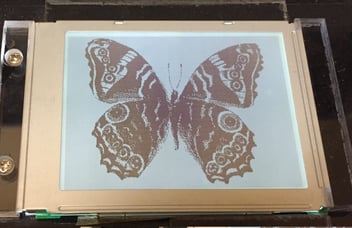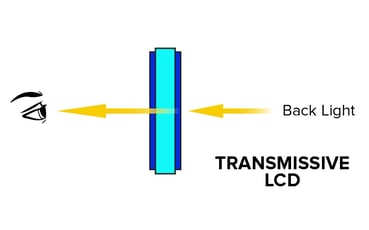Competing with the sun is tough for outdoor display applications. But technologies allowing enhanced display readability are there to tackle the challenge. First, know how your display will be used outdoors. Is it fixed or movable, as in hand-held? Fixed is more difficult. Hand-held devices like phones are easier because you can move your wrist to compensate for exterior lighting conditions. Will it be monochrome or is color necessary? Monochrome is simple. Color is more complex. Being clear on those points is initially important.
Going with Color
When your end product demands the imagery and definition of a full-color display in an outdoor application, two options are to use a true transflective color TFT LCD panel, or a sunlight-readable enhanced transmissive TFT LCD display. True transflective panels can be more expensive and are limited in available sizes. The transflective TFT cell is less common due to the additional manufacturing and design challenges associated with building the partial reflector on the active matrix backplane internal to the TFT cell. Additionally, they are subject to rapid technology changes and current models rapidly become obsolete.
It’s generally more cost-effective integrating a sunlight-readable display using standard transmissive color TFT. Additionally, transmissive displays typically fit a much wider range of display module integration requirements.
Transflective color TFT will have a contrast performance advantage over the sunlight readable enhanced display in most outdoor high ambient light scenarios. In addition to higher contrast for these specific scenarios, the transflective TFT cell will remain usable in a wider range of applications as it can remain readable in brighter conditions where the sunlight readable counterpart might become completely washed out.

Transflective (top) and Transmissive (bottom) displays
How Sunlight-Readable Displays Work
Given the need for outdoor applications, and limited availability of transflective panels, a hybrid, sunlight-readable display was created. The effect is created by properly combining the right type of anti-reflective front polarizer, high efficiency rear polarizer, and high efficiency backlight reflector where the cell is then able to reuse some of the sun's energy. Together with a higher brightness backlight, the overall image quality in high ambient light environments is greatly improved. To function in an outdoor environment, the backlight will need to be on.
Monochrome Applications are Simpler
In contrast, transflective display construction is easily achieved in a monochrome graphic display because it simply uses a transflective polarizer film on the outside of the liquid crystal stack, making this configuration much easier to produce. The ease of manufacturing combined with the versatility in both low and high ambient lighting environments is why monochrome transflective displays are the most common monochrome viewing format in use.




What Else Can We Do?
Both the sunlight-readable and transflective options reflect more light and are better suited for outdoor direct sunlight use. And to even further enhance the user experience in direct sunlight, it’s recommended to limit the image content to high-contrast images, such as large bold images or icons, and larger black on white text (not reverse) whenever possible. Shielding the display is another enhancement that can also extend the usability to help meet the challenge but may not work in every situation.
Finally, if there are any additional components on top of the display such as strengthened cover glass or touch-panels, using an optical bonding process rather than the traditional border adhesive with an air gap, will reduce the additional reflective surfaces improving the glare and sunlight usability of the display system.
Conclusion
If your product’s intended use is outdoors in high ambient lighting, there’s no need to settle for an off the shelf standard transmissive color TFT display. There are a few options to be able to optimize the LCD around your application. The optimal balance between performance and cost starts with the application. Simply ask the question, “Will the end user benefit adequately to justify the cost of these sunlight readability enhancements?”
Image by Susan Krebbs via Flickr CC







